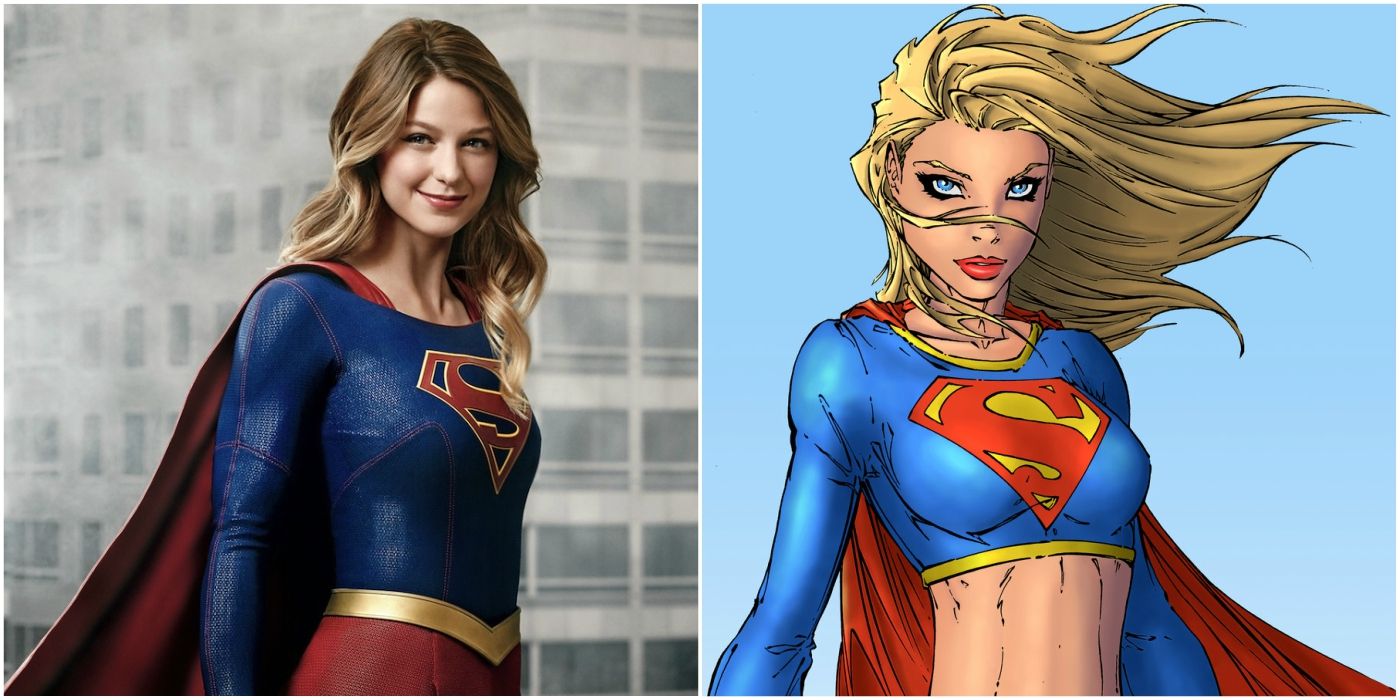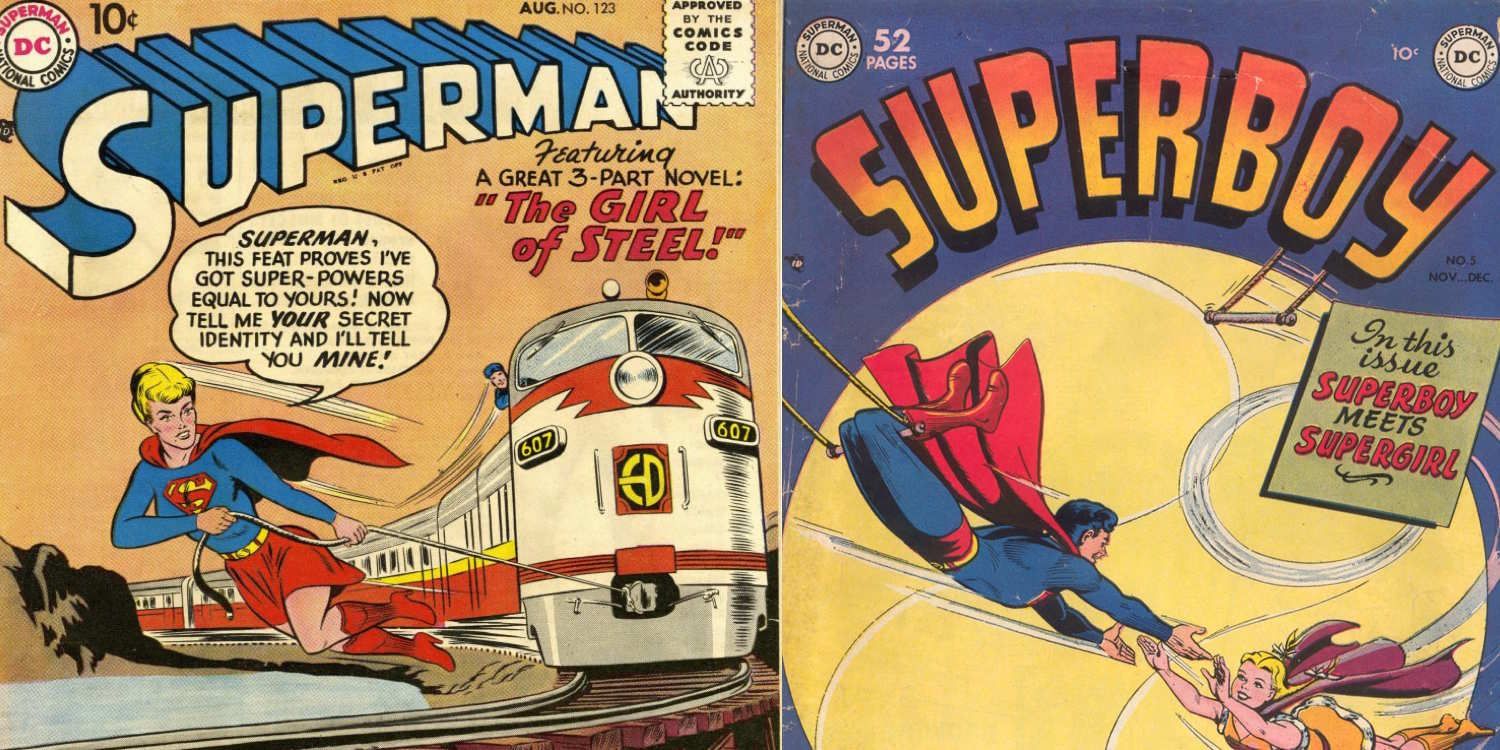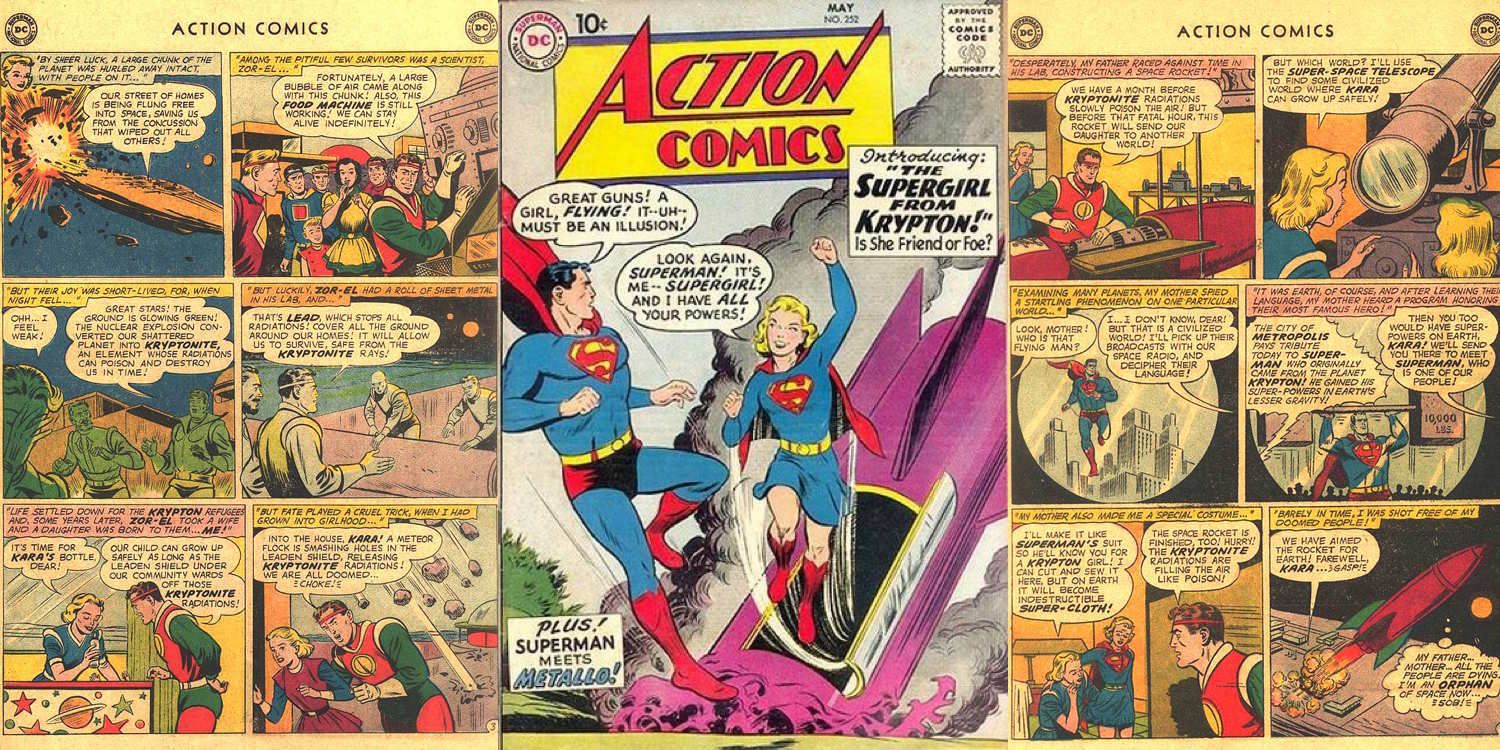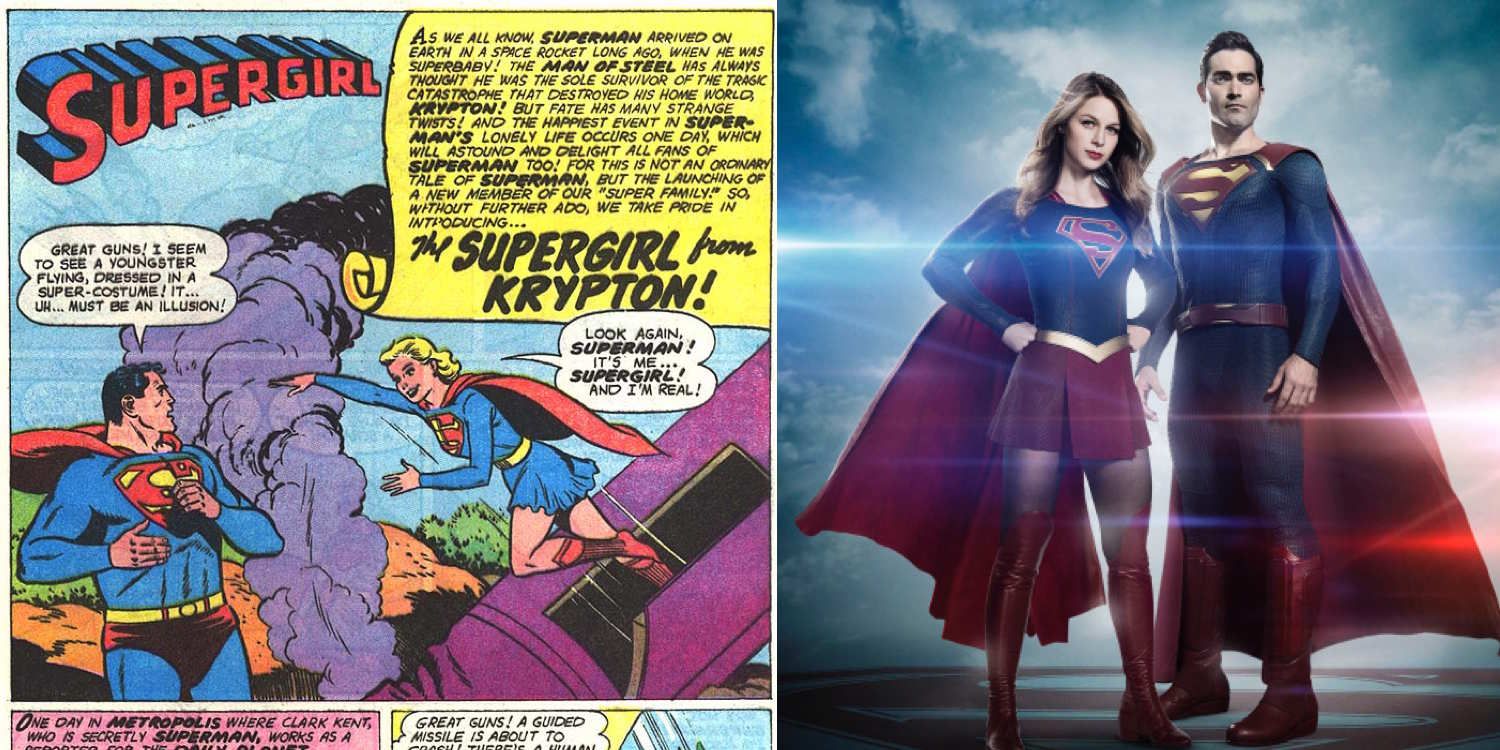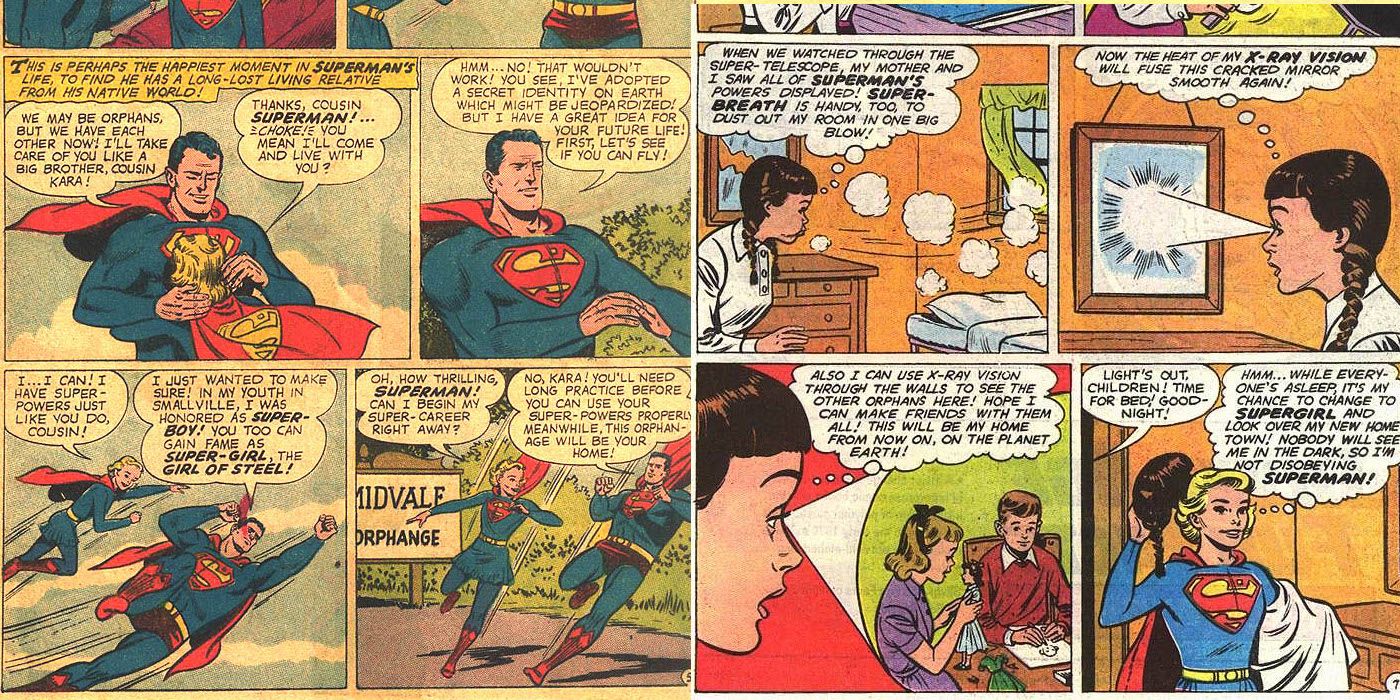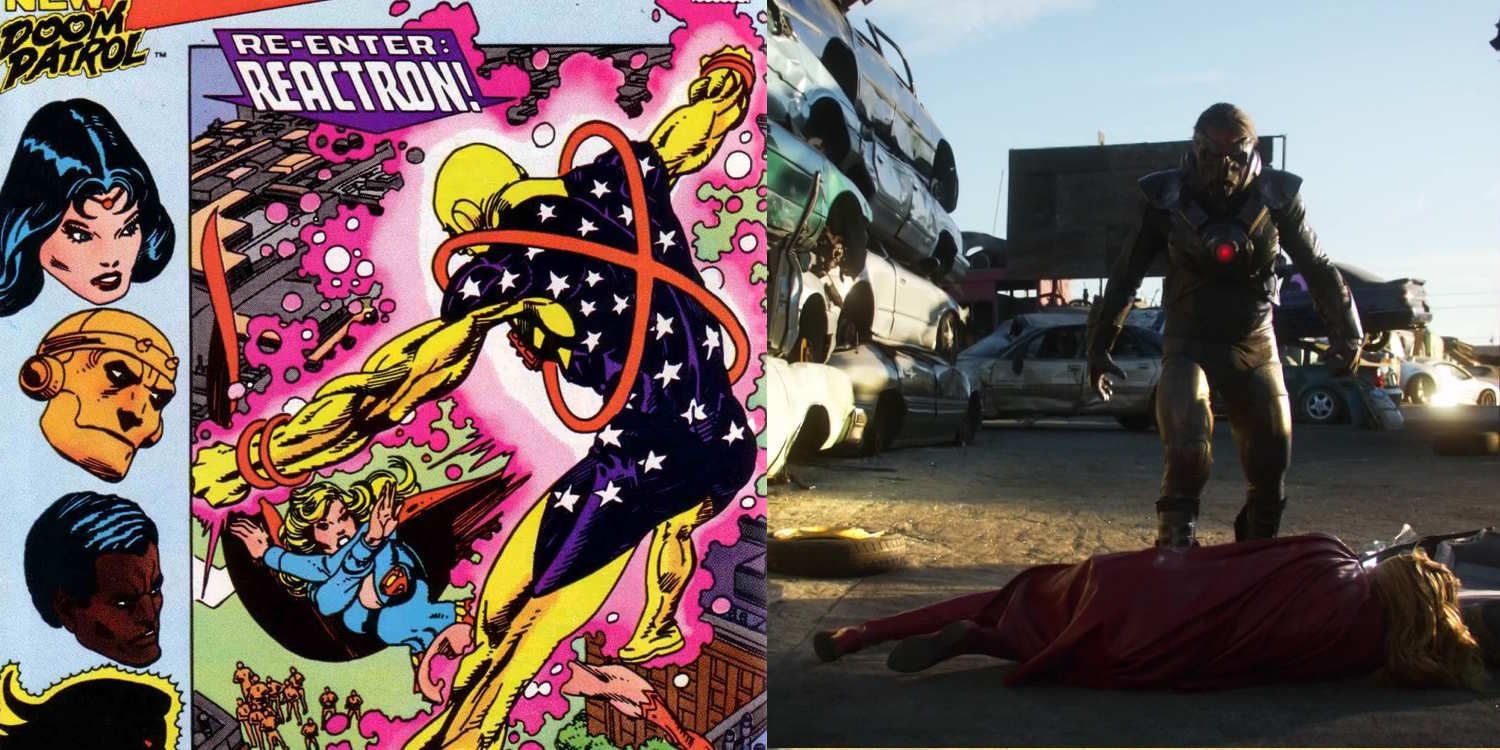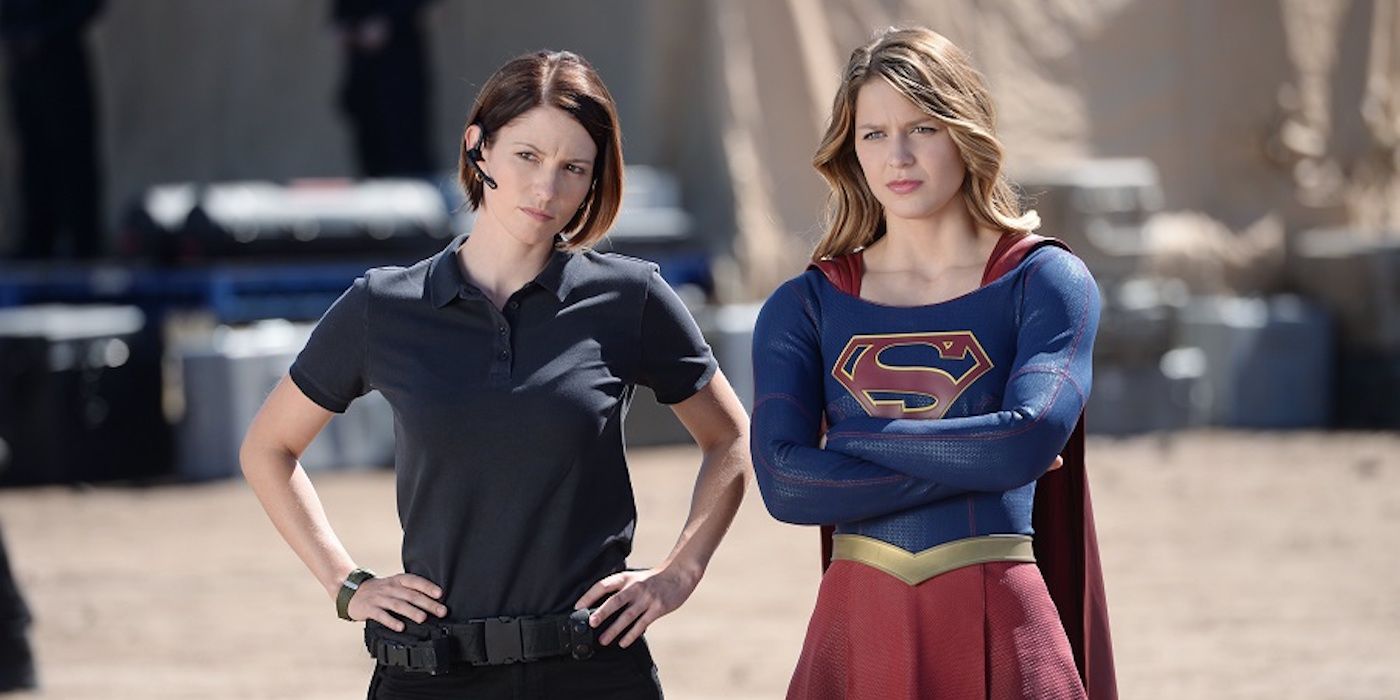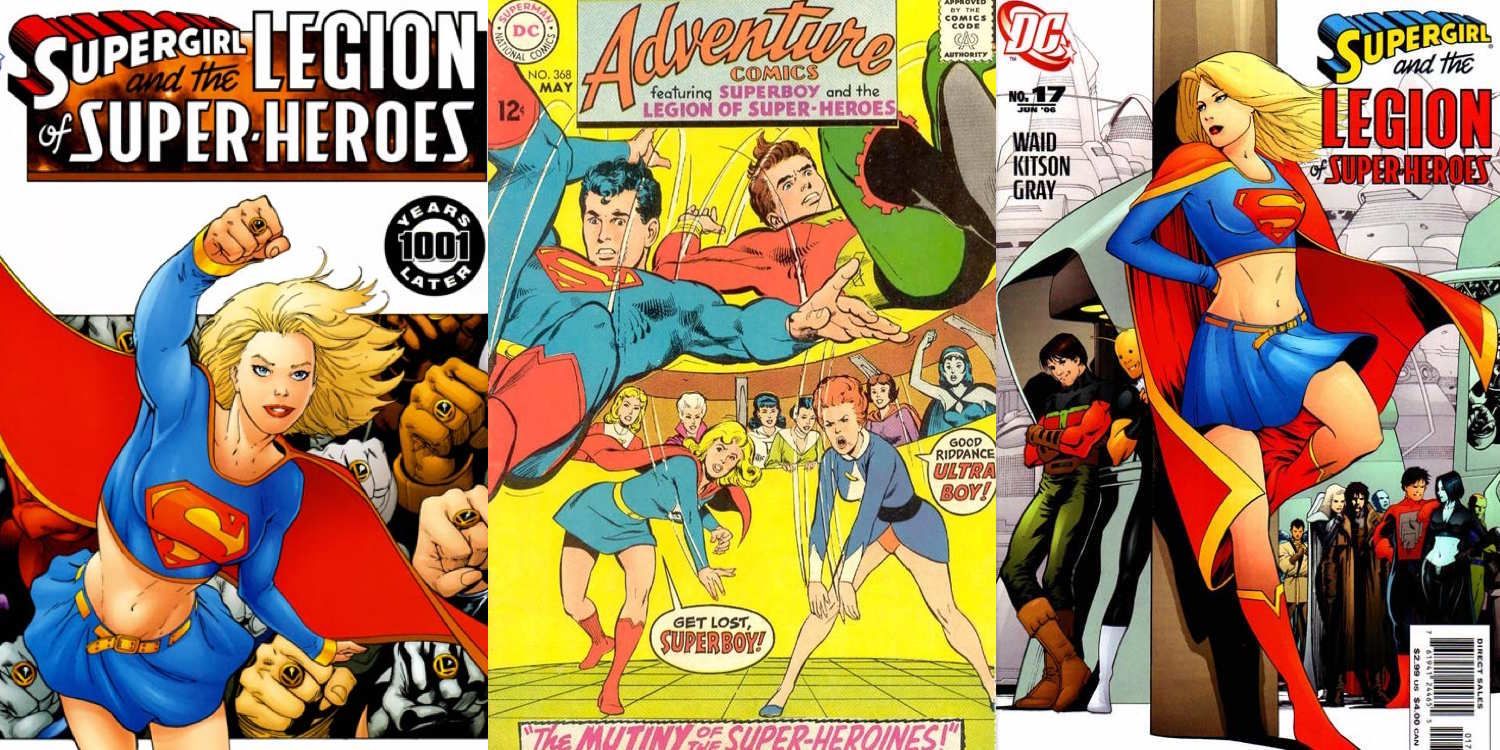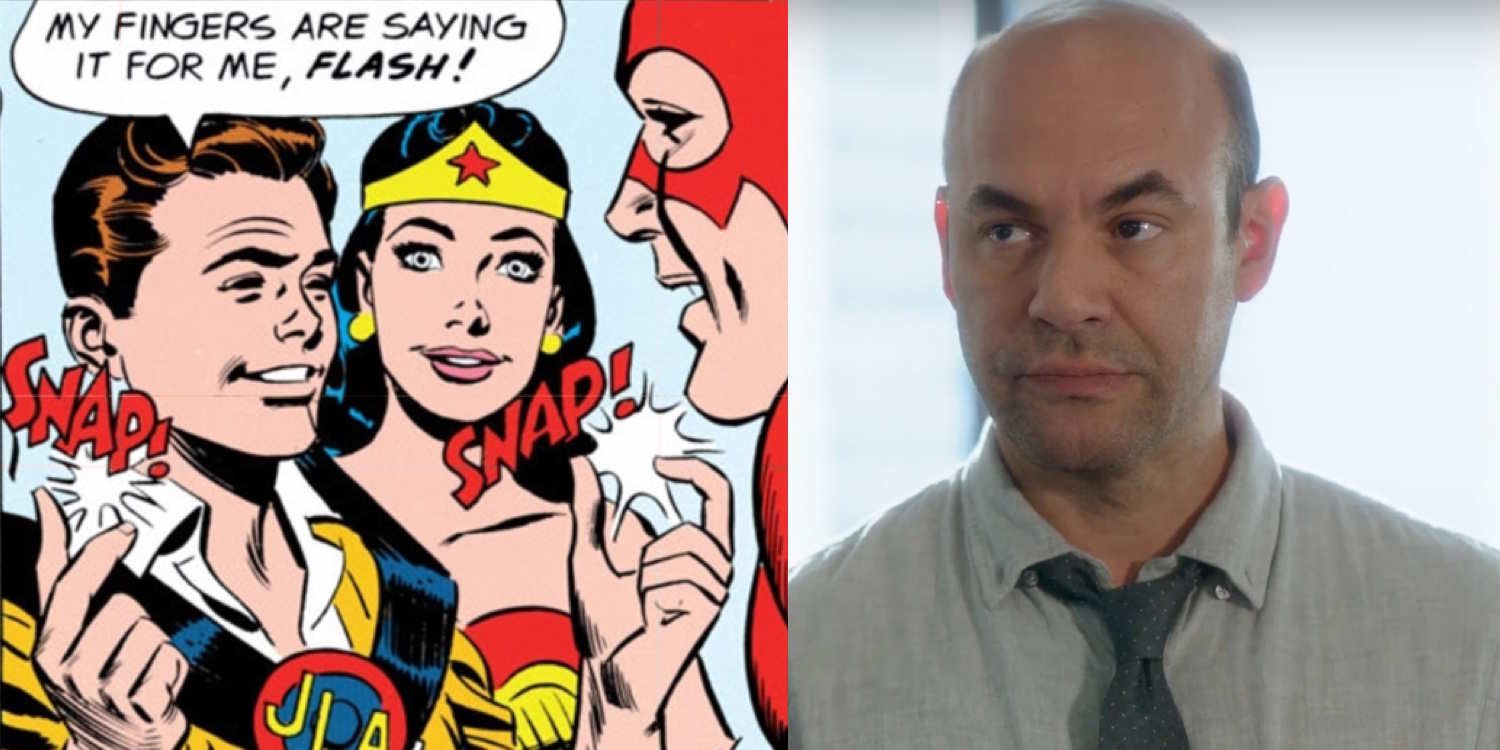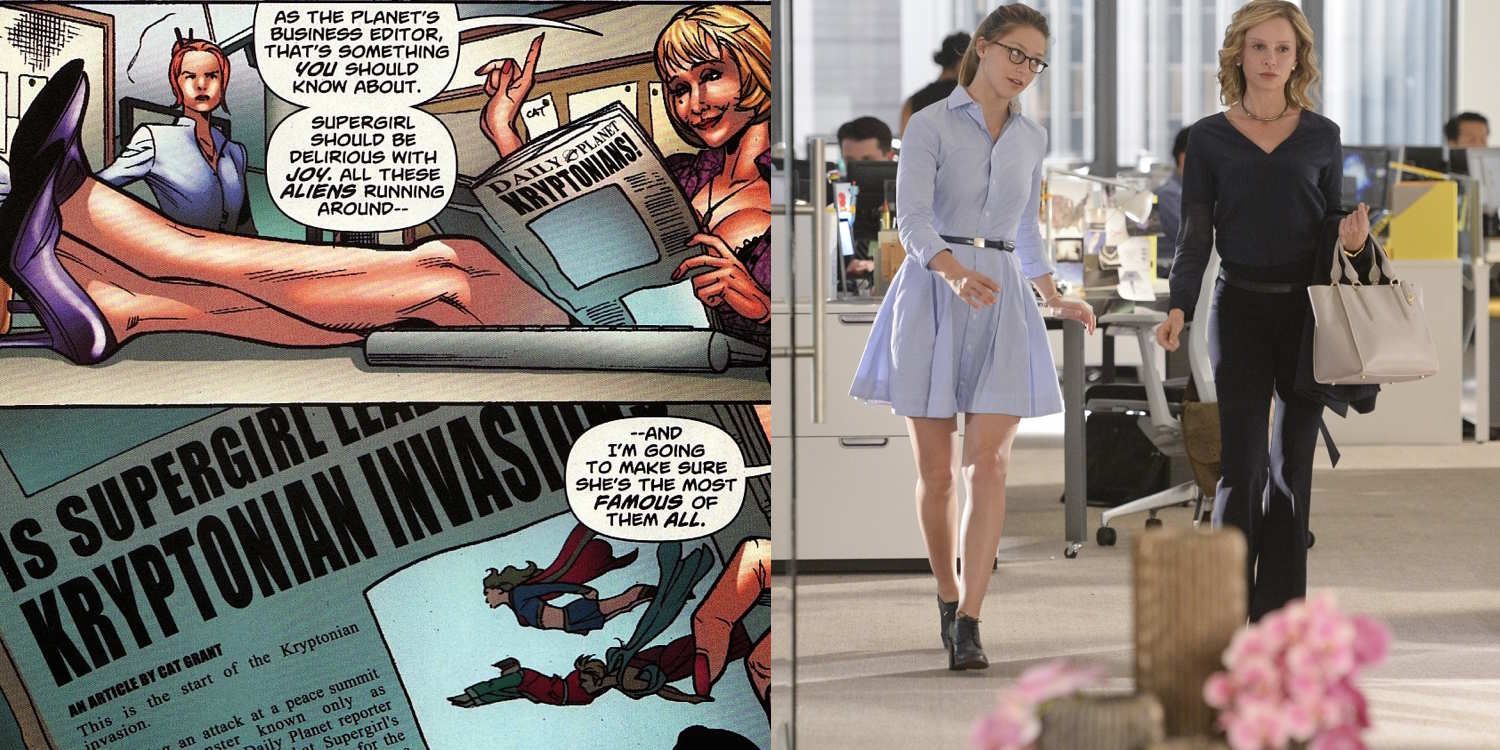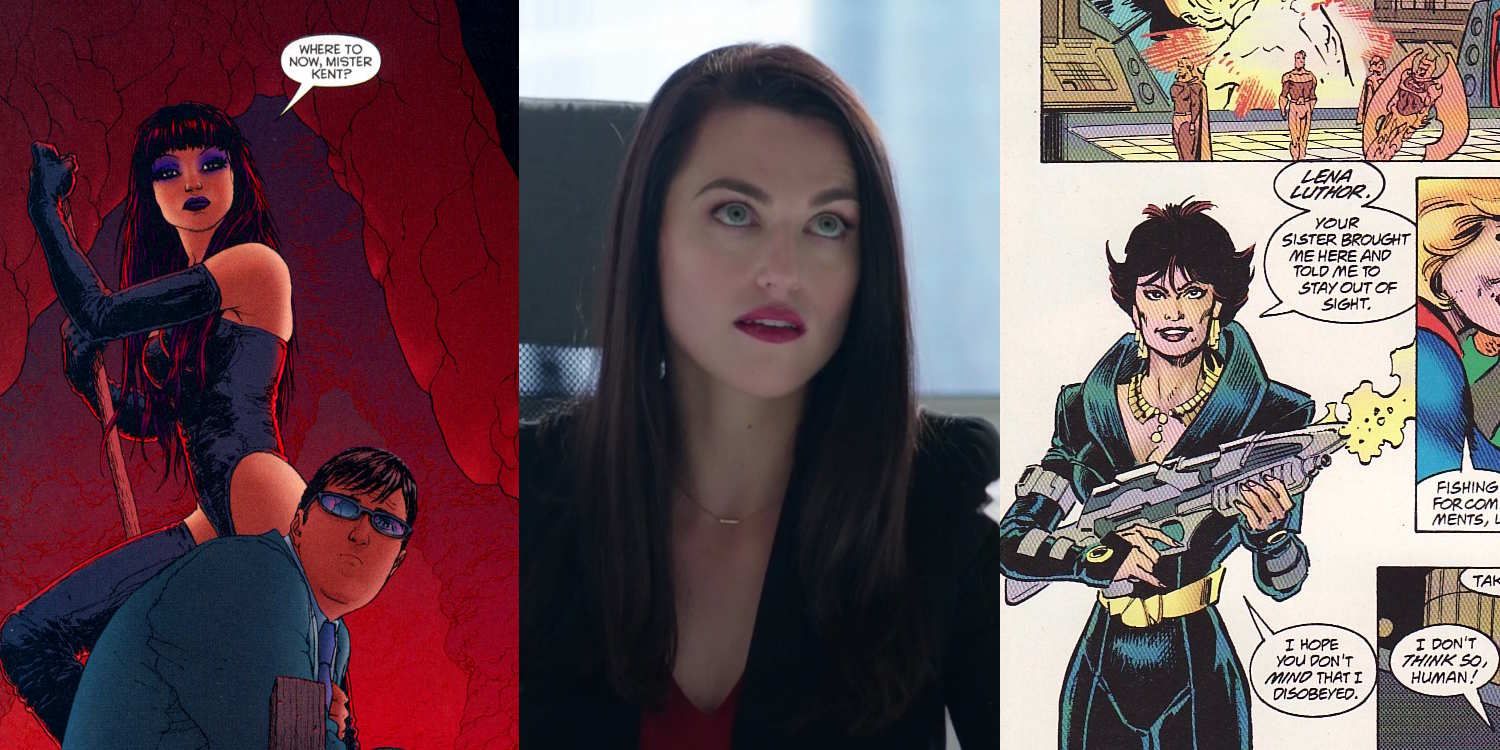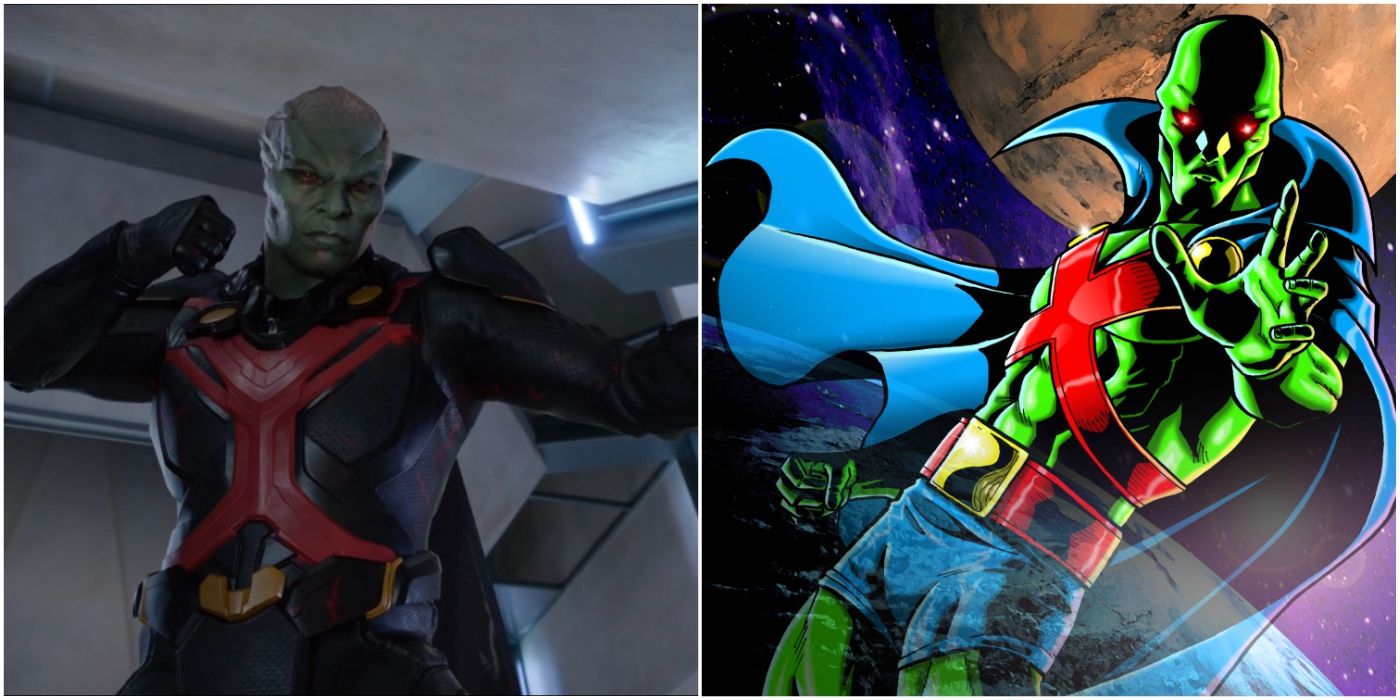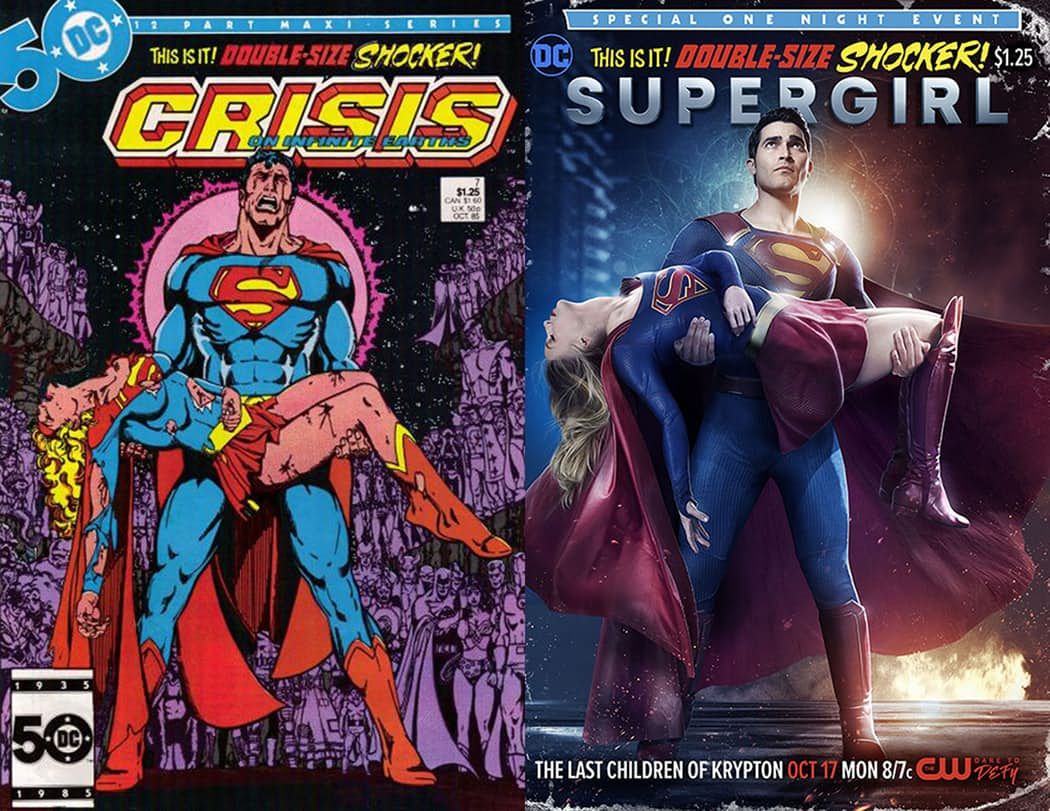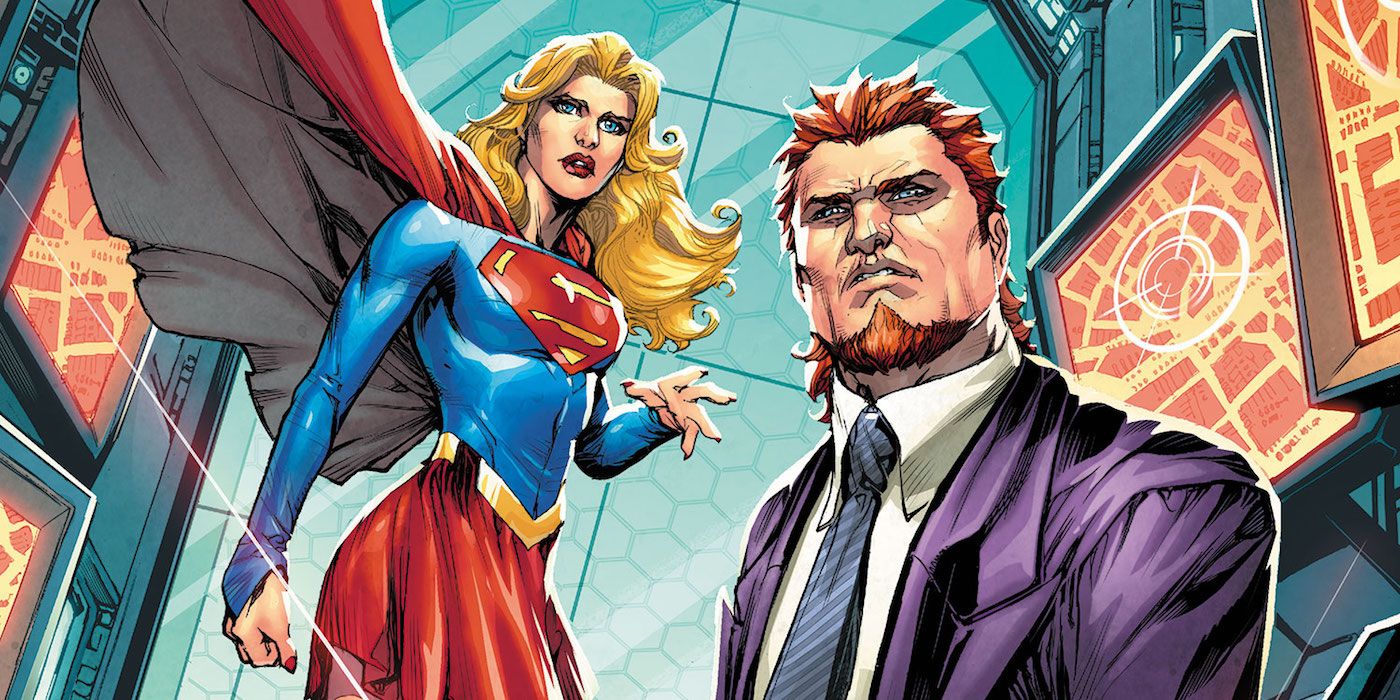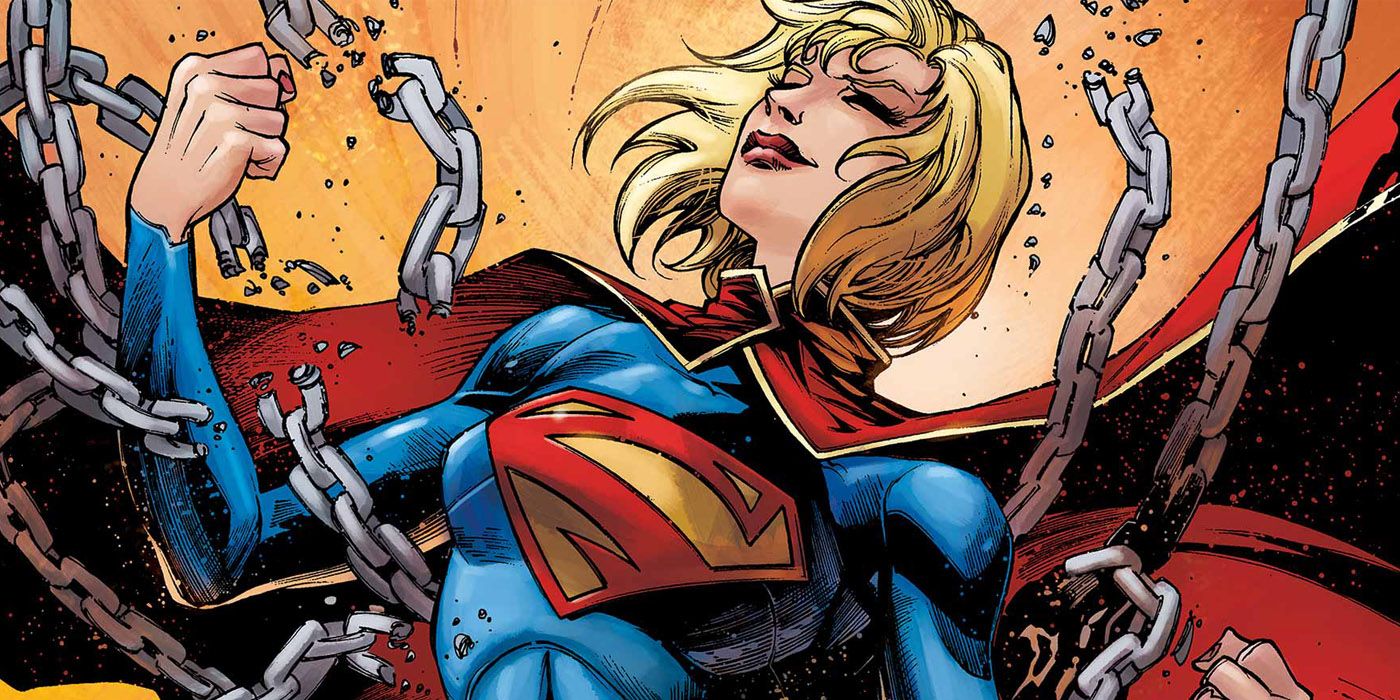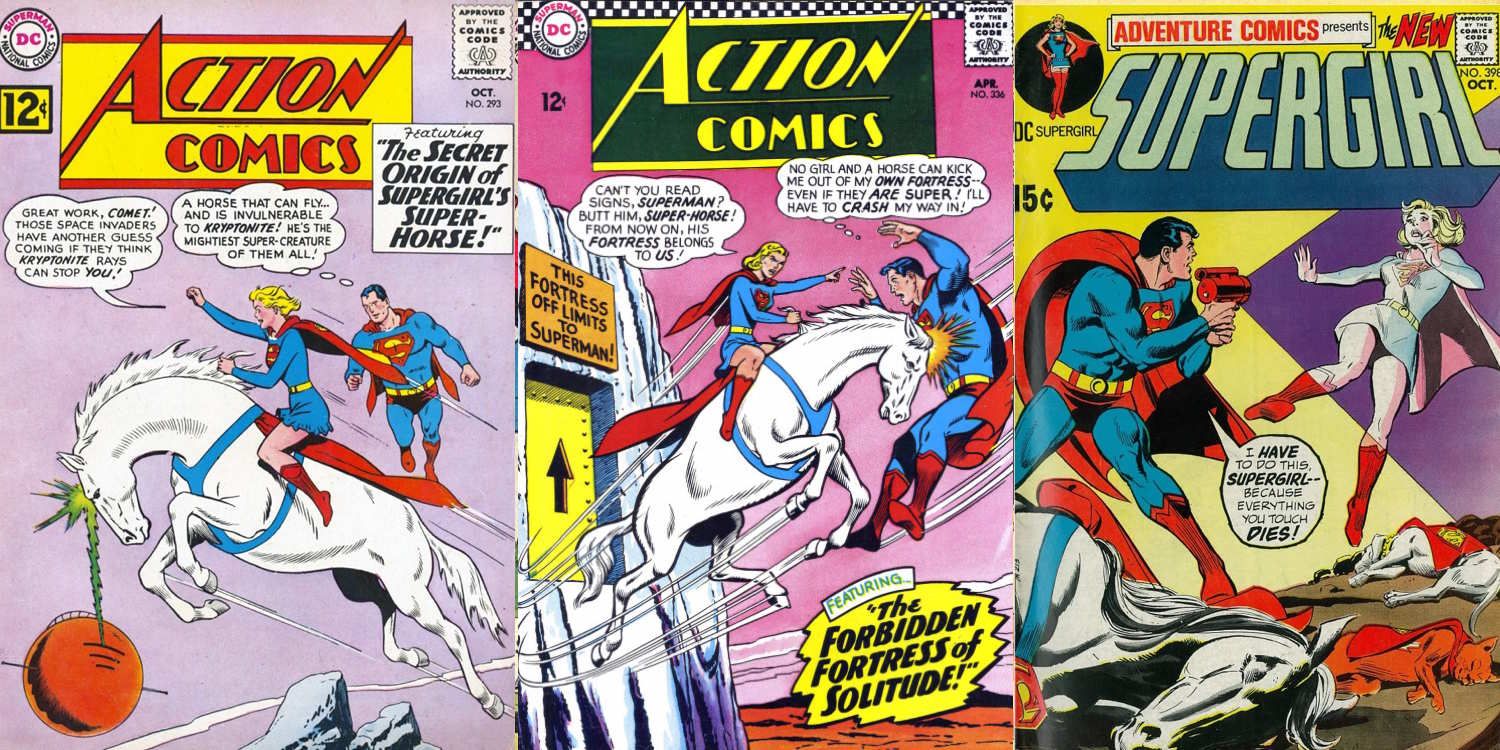Adapting characters from comic books into film or television is always a tricky endeavor, as there’s a need to streamline years worth of lore, please long-time fans, and attract a new audience. Last year’s debut of Supergirl wasn’t TV’s first, but it showed that Greg Berlanti and Co. were willing to stick close to the source material while leaving themselves enough room to allow their version of Kara Zor-El to thrive on her own terms.
Like Arrow and The Flash before it, Supergirl took the hallmarks of the DC Comics character and introduced her to a new generation of fans. We’ve already shown how a number of heroes and villains from the show compare to their comic book counterparts, so we thought it was time to put the spotlight directly on the Last Daughter of Krypton. As we await the return of Supergirl to our lives next month, here are the 15 Biggest Differences Between Her TV Show And The Comics.
15. Kara Wasn’t the First Supergirl
Before the cousin of Superman made her comic book debut in 1959, DC made a few different attempts to create a female version of their hit hero. There was Lois Lane’s brief tenue as Superwoman, and that time Superboy got turned into a girl named Super-Sister after he was a jerk to an alien woman. The first person to adopt the name ‘Supergirl’ (alternately stylized as ‘Super-Girl’) was a bit of a cheat. In the misleadingly titled “Superboy Meets Supergirl,” the young Kryptonian encounters Lucy, the queen of a fictional Latin nation. To impress her, he stages a bizarre performance where he tricks people into thinking she has powers and gives her a matching name and outfit. This idea naturally only lasted one issue. DC, however, wasn’t quite done yet.
In 1958, just one year before Kara’s introduction, DC crafted another Super-Girl. In Superman #123, Jimmy Olsen somehow gets his hands on a magic idol and uses it to wish for a female Superman to give the Man of Steel a sidekick (sure, Jimmy). The pairing proved fatal as the new hero quickly suffered a life-threatening injury, asking Jimmy to magic her back out of existence. Mechad Brooks’ transformation into the Guardian has been awkward enough, so here’s hoping he never finds a magical totem and this story remains a comic curiosity.
14. Supergirl Isn’t Exactly From Krypton
Following Jimmy’s creepy wish, DC decided to finally introduce a proper version of Supergirl. Premiering in Action Comics #252, the adventures of Kara Zor-El proved to be a massive hit for the publisher. Her origin as we know it from many of her adaptations, however, isn’t at all the same. When Krypton exploded, Kandor wasn’t the only piece of it that survived. Thanks to the work of Kal-El’s scientist uncle, Zor-El, Argo City was able to protect itself from the explosion and move through space separate from the destroyed planet. In the years that followed, Zor-El met his future wife Alura, and together they had Kara.
The happiness soon came to an end, however, as an unbalanced resident of Argo City sabotaged the land-mass and sent it into a meteor field. The result saw the Kryptonite at the base of Argo sent into the city’s containment bubble, slowly poisoning the citizens. Like Kal’s before them, Kara’s parents sent her towards Earth on a rocket in an effort to save her life.
13. Kara and Kal Didn’t Originally Know Each Other
Supergirl has had a number of tweaks to her origin over the years, and her early connection to Superman wasn’t always part of it. Since baby Kal was sent off to Earth just before Krypton exploded, the Kara of the comics didn’t originally know her cousin. As noted above, Kara was born years after the planet’s destruction, with only stories of her connection to Jor-El and his family. On the show, Kara is shown living alongside her aunt and uncle and their new child on Krypton. These flashbacks give us a sense of how she cared for her cousin, and provide a nice contrast to their interaction on Earth where he’s much older than her.
The show also stresses that Kara’s mission was to help raise and protect her infant cousin. In the comics, however, it was the other way around. Kara’s parents sent her to Earth so that Kal could watch over her. And since they’d never even met, the child was given a uniform similar to Kal’s so that he’d recognize her as friendly when she arrive on the blue planet. Eventually, this whole backstory would be significantly altered, with Kara’s origin more closely resembling the one we’re familiar with.
12. Her Early Years On Earth Were Spent In An Orphanage
Supergirl the show simplified Kara’s arrival on Earth by having her cousin intercept her and bestow her upon a kindly family. In the comics, things went a little differently. Adopting the alliterative name Linda Lee (this was the Silver Age of comics after all), Kara spent the first few years on her new planet living in the Midvale Orphanage. Kal even made her put on a brunette wig, because hiding your secret identity with a pair of glasses was already his thing. Luckily, Kara, er Linda, was eventually adopted by the kindly Danvers family.
While at least one of them is still a scientist in the comics, DC decided to keep things as Superman-adjacent as possible by giving Kara’s new family the farm-friendly names Fred and Edna. Now going by Linda Lee Danvers -- despite both Kara and Kal being completely normal Earth names -- Superman finally deems Kara to be mature enough to start fighting crime as Supergirl. This marks another departure from the TV show, where the two Kryptonians don’t seem to have many interactions during Kara’s formative years. The irony being that the comics needed to keep their big star front and center, whereas Warner Bros. took some convincing before a new Man of Steel could properly appear on TV.
11. Reactron Killed Kara’s Parents
In the Arrowverse, Kara’s parents perished along with Kal’s during the destruction of Krypton. The choice simplifies things and emotionally aligns our protagonist with her cousin in a way most of us are familiar with. Meanwhile, in the comics, Kara’s parents survive their brush with death and prove that perhaps jettisoning their daughter into space was a bit of a premature gambit.
Okay, everyone but Zor-El and Alura dies from the Kryptonite poisoning, so maybe it was a good call. Mirroring Kara’s detour into the Phantom Zone from the series, her parents wind up in the fortuitously named Survival Zone. Kara eventually finds them and brings them to Kandor, the Kryptonian city that exists in a bottle (if you’re thinking that idea seems too crazy for TV, Smallville already had the guts to try). Sadly, the radioactive villain Reactron ends up killing them both, forcing Kara to suffer the loss of her family twice.
Even though most of these details were excised from her Arrowverse origin, it would have been nice to see Reactron given a weightier role in Supergirl as one of Kara’s key antagonists. Instead, he’s relegated to Fort Rozz Escapee of the Week in the third episode of the show. We’d feel bad for him if he didn't, you know, murder Kara’s parents.
10. Alex Danvers Didn’t Exist In The Comics
Speaking of Kara’s family, one of her most important loved ones was created just for the show. Though Supergirl’s main focus is on Kara, her adoptive sister Alex Danvers has received equal amounts of praise from critics. Season 1 was lauded for the realistic portrayal of not only the sisterhood between Kara and Alex, but of the real world implications of an adopted sibling. The relationship is the heart of the series, and it’s enhanced thanks to the chemistry that stars Melissa Benoist and Chyler Leigh have together.
Season 2’s biggest buzz also centers around Alex, as her coming out story has been celebrated for its honesty and is literally saving lives. With Superman’s absence during the first season of the show, it helped to provide the young Kara with a familial role model that she could regularly interact with. When you add in the fact that Alex is also an ass-kicking, alien-hunting secret agent, we have to wonder how long it’ll be until she’s drafted into the comics.
9. Kara Joined The Legion Of Super-Heroes As A Teen
Like the bottle city of Kandor, the Legion of Super-Heroes is another somewhat far-out element of DC Comics lore that still managed to make it onto Smallville. Though the 30th-century superhero team could find their way into the Arrowverse eventually, many of Kara’s early adventures with the group from the comics will probably be significantly altered. Debuting one year before Kara in Action Comics #247, the Legion was created by the same creative team behind Supergirl, Otto Binder and Pastino.
Operating with the group while still a teenager, Supergirl was joined by fellow Kryptonian Superboy and a young Daxamite named Mon-El. Given that the latter appears on Supergirl, there’s even more reason to suspect that the Legion of Super-Heroes is only a season or two away from popping up and giving the Arrowverse another set of time-traveling crime fighters.
Though Kara’s not likely to be a full-fledged member of the futuristic team like in the comics, we could see her occasionally join forces with them to take on threats. Perhaps next year’s crossover would be a good place to start.
8. Kara Was A TV Reporter And Actor In The Comics—And Snapper Carr Was A Superhero
When we first encounter Kara Danvers on Supergirl, she’s the personal assistant to media mogul Cat Grant at her company CatCo Media. Season 1 ended with her vacating that position and being offered her dream job by Cat—just as soon as she figured out what it was. After some debating in the premiere of Season 2, Kara finally decided she wanted to be a journalist like her cousin. She encountered some friction during the transition thanks to her new boss, Snapper Carr, but eventually settled into the role.
Snapper himself is quite different from the comics. Debuting a year after Kara, he’s actually a “hip” teen member of the Justice League who can teleport by, you guessed it, snapping his fingers. The show, instead, makes him a curmudgeonly news editor (a role he's held in other incarnations), but it's entirely possible that he’s keeping those powers stashed away for a rainy day.
For Kara, the comics saw her dance around a similar position following her time at Midvale High School and Stanhope College. Once it’s time to find a career, she spends her non-superhero hours as an actor in soap operas and a TV reporter. The show’s decision to give her a bit more know-how and agency and tackle hard-nosed journalism allows Kara to remain in the action like Clark has for years. The choice also provides the CatCo sections of the series with more weight, as we get to watch our protagonist battle for justice both in and out of costume.
7. Cat Grant Originally Hated Supergirl
While on the subject of CatCo, Cat Grant had a very different opinion of Supergirl in the comics. We’ve detailed a number of the differences already, but the gist of their relationship bears repeating. When Supergirl was once again updated for a self-titled 2008 series, Cat Grant was brought in as a supporting character. As it turns out, Grant was no fan of the Girl of Steel, and regularly wrote disparaging pieces about her. The show, meanwhile, had the complete opposite happen. In the series, Cat is a huge supporter of Supergirl, and uses CatCo to hail the hero’s exploits and even bestows her with her heroic moniker.
Eventually, the two get caught up in a scheme by Dollman where he tries to kill Supergirl and have Cat adopt him. Luckily, Cat and Kara soon foil the creepy scheme, and the reporter warms to the superhero. DC’s Rebirth brought the character even more in line with Calista Flockhart’s portrayal, while still retaining her somewhat aggressive attitude towards Supergirl.
6. One Of Kara's Arch-Rivals Was Nasty Luthor
Season 2 of Supergirl introduced a version of the character Lena Luthor. The adopted sister of Lex connects with both Supergirl and Kara over their similar situations and desire to form a unique identity apart from their more famous family members. While Kara is still proud of her cousin, Lena wants nothing to do with her villainous brother and mother, who's revealed to be the head of Cadmus. It's likely there's more to her than it seems, however, as the character has popped up in comics and on Smallville as much more sympathetic to Lex's mission of eradicating Kryptonians.
In the comics, Kara spends more time interacting with another Luthor, though. During the '70s, one of her chief antagonists is Lex's niece, Nasthalthia Luthor. In case you weren't sure of her alignment, she chooses to go by the nickname of Nasty. (Oh, comics, never change.) Nasty spent years trying to prove that Linda/Kara and Supergirl were one in the same, something that Lena is sure to figure out soon enough on the show. Given the Luthors growing presence on the show, here's hoping Nasty eventually pops up on her own, just so we can see Kara react to her name.
5. Martian Manhunter Doesn’t Play A Role In Supergirl’s Origin
Considering they’re two of DC’s biggest heroes, Supergirl and Martian Manhunter have had their share of adventures together. On the comics side of things, however, they have nowhere near the same emotional connections as they do on the TV series. Despite both of Kara’s adoptive parents appearing on the show, her second closest relationship after her sister is with the head of the DEO, Hank Henshaw.
The show’s take on Henshaw is probably the most egregious example of the comic lore getting all twisted up. In the comics, Henshaw is Cyborg Superman—a storyline the show recently tried to awkwardly reinsert. The series, however, has established that guise as a cover for J’onn J’onnz, aka the Martian Manhunter. Eventually, both Kara and Alex break through the fake Henshaw personality, and the Martian not only becomes one of Supergirl’s most powerful allies, but a surrogate father for both Kara and Alex. Like Joe West on The Flash, J’onn allows the show to explore some wonderful themes about adoptive parents, which is only slightly confusing, as Kara actually has a set of those already. Make any excuse you need to get more screentime for David Harewood, CW Network. You won’t hear any complaints out of us.
4. Kara Was Killed During Crisis On Infinite Earths
Granted, the death of Supergirl could still happen on the TV show. The Flash has long teased a “Crisis” after all. Still, with her name being the title of the series, this likely wouldn’t last long. Just like Superman in Batman v Superman, a Kryptonian’s death is rarely permanent. Along with Barry Allen and a number of other heroes, Supergirl was killed during the universe-rebooting events of DC’s Crisis On Infinite Earths storyline during the ‘80s. Her death even led to one of comic’s most iconic covers, featuring a hysterical Superman cradling her dead body. It’s proved so enduring, the show even paid homage to the image in a recent episode (glimpsed above).
When the dust settled on Crisis, DC reintroduced most of their superheroes and villains, but just like Barry, Kara was left out for two decades. The reasoning was that the publisher wanted to move back to Superman being the lone Kryptonian in the comics. The move, of course, gives Kal back the emotional weight of being the sole survivor of his planet's destruction, but comic book companies just can’t resist making infinite versions of their most popular heroes.
3. Her Death Saw The Creation Of Other Supergirls
In classic semantic fashion, DC dismissed the idea of having two Kryptonians while simultaneously ensuring that the popular ‘Supergirl’ name continued. Mirroring the alternate versions of Supergirl that existed before Kara came along, the publisher pumped out a number of new Supergirls unrelated to Kara following her death.
First, there was Matrix. Unlike Kara, she was a synthetic being created by Lex Luthor. With the power of flight and strength, she could also shape-shift and become invisible. Naturally, she adopted a look quite similar to the Kara that never existed and donned a skimpy version of Superman’s costume. She even lived with the Kents for a time. Eventually, DC rebooted the character with the 1996 Supergirl title. In the book, she’s merged with a human and brought even more in line with the previous Girl of Steel. Using the name Linda Danvers, an homage to Kara’s alter ego, she served as DC’s Supergirl for a number of years. It wasn’t long, however, until DC started itching to bring back the proper version of Kara
2. Kara’s Post-Crisis Debut Gave Us A Similar Origin To The TV show
Just like Barry Allen eventually came back in the early 2000s to reclaim his place as the Flash, 2004 saw Kara Zor-El finally returned to her post as DC’s Supergirl. Re-appearing in Superman/Batman #8, Kara is given a post-Crisis origin that TV viewers will find more familiar. Instead of floating along in a separate city for years, Kara is sent from a dying Krypton by her parents. It’s here that the older Kara is tasked with protecting her young cousin Kal on Earth. Instead, a meteor shower waylays her so that when she finally comes to our planet, Superman has been operating for years and is a good deal older than her.
DC’s New 52 reboot saw the broad strokes of this story kept for Kara’s new origin. She doesn’t remember the destruction of Krypton, however, and her grief upon accepting the reality of her situation factors into her characterization in the series. Both the post-Crisis DC and the New 52 reboot were designed to streamline character’s stories, so it makes sense that the books and the show would keep Kara’s backstory closer to Kal’s in an effort to simplify things for the majority of audiences and provide a thematic through line.
1. Kara Had A Super-Powered Horse In The Comics
There’s no way we could end this article with anything from the comics other than Kara’s bizarre pets. The ‘60s were a simpler and cornier time in comics, and they saw many super-pets introduced in an effort to win over young readers. Like Superman’s dog Krypto, Supergirl started out with a pet sidekick. Named Streaky, Kara’s cat is given Kryptonian powers thanks to a failed experiment by Supergirl to neutralize the effects of Kryptonite. As if that wasn’t bizarre enough, DC then decided a super-horse was a good call.
Created by Superman co-creator Jerry Siegel and debuting in Action Comics #293 in 1962, Comet the Super-Horse served for a number of years as the Steed of Steel. Once your run-of-the-mill centaur back in the day, Comet is accidentally transformed into a horse with telepathic powers. We’ve all been there. He’s then granted immortality and eventually joins up with Kara so she can ride on his back and take advantage of his ability to fly in case maybe she gets tired of flying herself. It’s best not to think about it too hard. Either way, it’s time we start petitioning the CW to introduce both Streaky and Comet to the Arrowverse immediately.
---
Which changes from the comics do you think work the best for Supergirl? Is there anything you hope they include in future episodes? Let us know in the comments!

